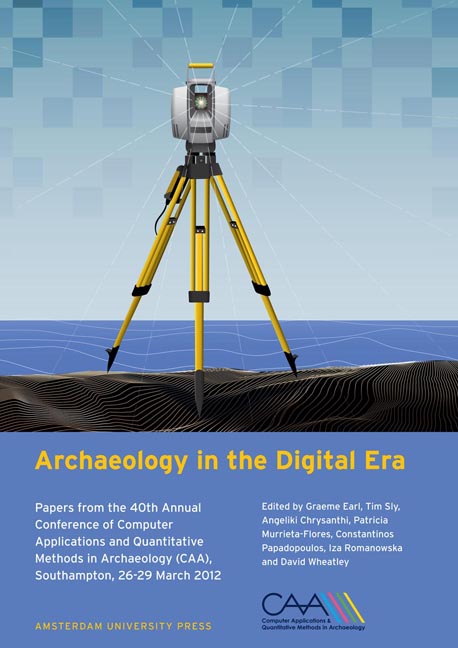 Archaeology in the Digital Era
Archaeology in the Digital Era Retracing Prehistoric Population Events in Finland Using Simulation
Published online by Cambridge University Press: 16 February 2021
Summary
Abstract:
Due to Finland's low population density, geographical location and gradual settlement history, the country has been a genetic isolate. Genetic diversity is still slightly reduced among the Finns, especially in the eastern part of the country. This diversity reduction and the specific ‘Finnish Disease Heritage’ are explained by founder effects and bottlenecks and there is archaeological evidence for profound fluctuation of population sizes in the past. Here, we apply forward-time population simulations including archaeologically justified population size estimates to detect past demographic events. Our results indicate that simulation models beginning with serial founder effects have clearly reduced genetic diversity in early prehistory. Compared with our previous simulations, the gender-specific migration brings the simulated genetic diversity closer to the observed contemporary genetic diversity in Finland. Additionally, the simulation scenarios with temperate constant gene flow produce Y chromosomal diversity measures similar to those observed in present-day Finnish population.
Keywords:
Prehistoric Population, Population Simulation, Period, Finland
Introduction
The first pioneers settled in the Finnish region circa 11,000 BP following the retreat of the continental ice sheet after the last glaciation. According to archaeological finds, the region has been continuously inhabited ever since. Finland's prehistoric population events and settlement history have been studied by a number of archaeologists (e.g. Siiriainen 1981; Meinander 1984; Nunez, M. 1987; Huurre 1990,2001; Lavento 1997,1998,2001; Carpelan 1999a, 1999b; Edgren 1999; Halinen 1999, 2005; Nunez & Okkonen 1999; Mokkonen 2002, 2011; Pesonen 2002, 2005; Takala 2004; Rankama & Kankaanpaa 2008; Saipio 2008; Tallavaara, Pesonen & Oinonen 2010; Tallavaara & Seppa 2012).
On the other hand, geneticists have carried out numerous studies concerning the population genetics and the origins of Finns (e.g. Nevanlinna 1972, Cavalli-Sforza et al. 1994; Sajantila et al. 1995, 1996; Lahermo et al. 1996,1998; Lahermo 1998; De la Chapelle & Wright 1998; De la Chapelle 1999; Kittles et al. 1998, 1999; Savontaus & Lahermo 1999; Norio 2000, 2004; Peltonen et al. 2000; Varilo et al. 2000, 2003; Kere 2001; Uimari et al. 2005, Lappalainen et al. 2006, 2008; Lappalainen 2009; Salmela et al. 2006, 2008; Service et al.2006, Hedman et al. 2007; Hannelius et al. 2008; Jakkula et al. 2008; McEvoy et al. 2009; Palo et al.
- Type
- Chapter
- Information
- Archaeology in the Digital EraPapers from the 40th Annual Conference of Computer Applications and Quantitative Methods in Archaeology (CAA), Southampton, 26-29 March 2012, pp. 93 - 104Publisher: Amsterdam University PressPrint publication year: 2014
- 1
- Cited by


